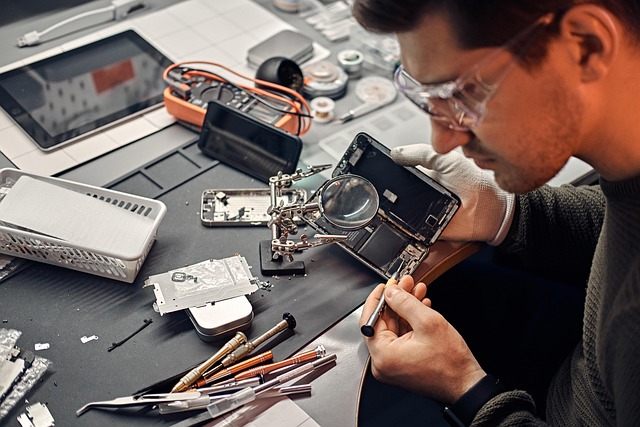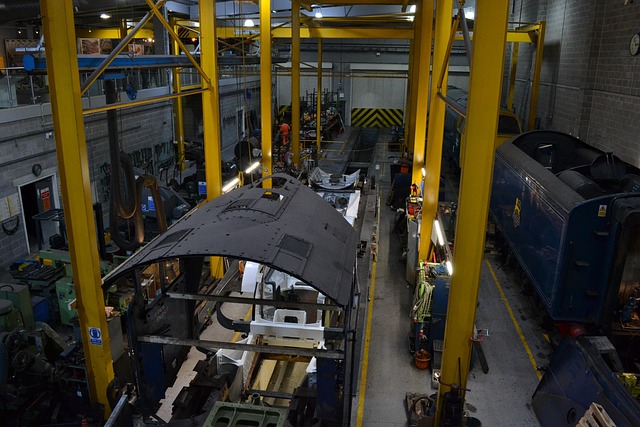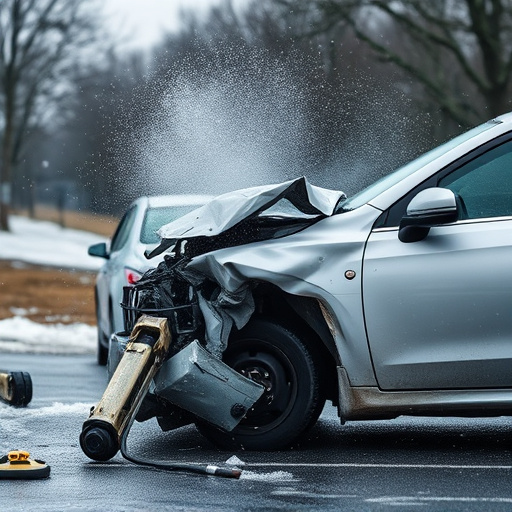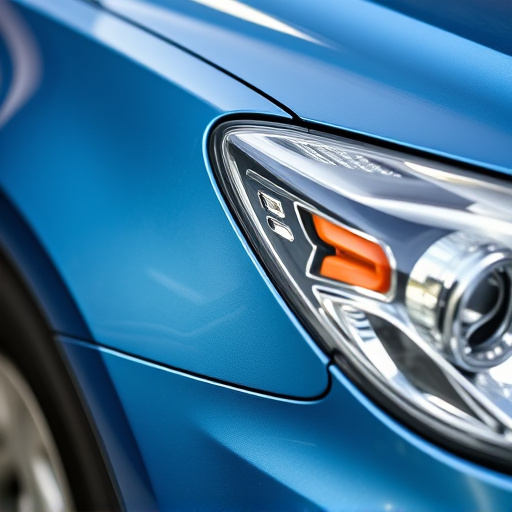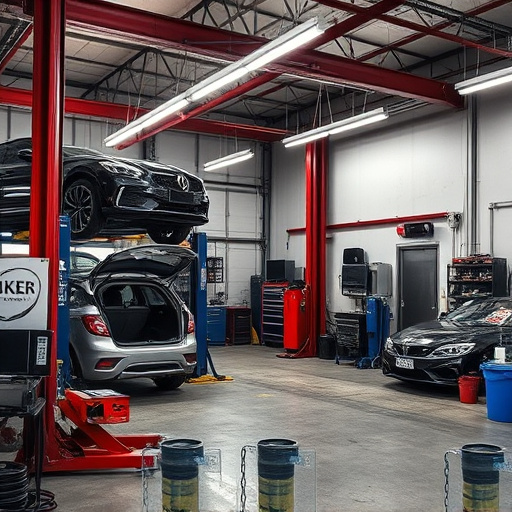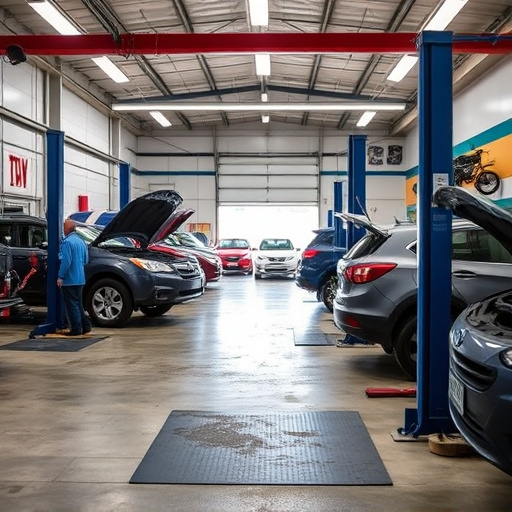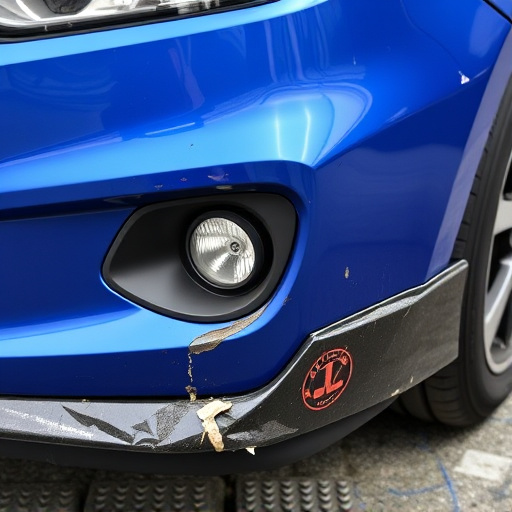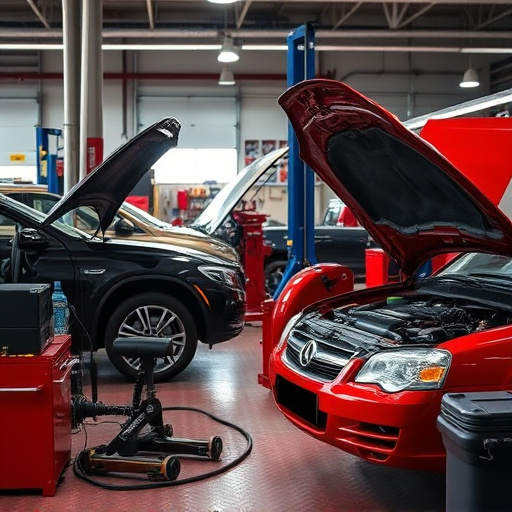Tesla's advanced safety system, reliant on sensors, cameras, and radars, requires regular Tesla repair scanning for optimal performance. This process identifies software glitches and physical damage through specialized tools, ensuring passenger safety by correctly diagnosing and repairing issues with airbags, brakes, and other critical features. Following best practices and trusting specialized centers guarantees accurate resets without masking underlying problems, keeping your Tesla a reliable and safe vehicle.
In today’s digital age, understanding Tesla’s sophisticated safety system is crucial for efficient repairs. This article delves into the process of Tesla repair scanning and resetting safety system alerts. By examining how these techniques diagnose and resolve issues, owners can ensure their vehicles’ advanced driver-assistance systems (ADAS) function optimally. We’ll explore best practices for safe and effective resets, empowering professionals to navigate this intricate landscape effectively.
- Understanding Tesla's Safety System and Alerts
- The Role of Scanning and Resetting in Repair
- Best Practices for Safe and Effective Resets
Understanding Tesla's Safety System and Alerts

Tesla’s safety system is a sophisticated network designed to protect both the vehicle and its occupants. It incorporates various sensors, cameras, and radars to monitor surroundings, detecting potential hazards like collisions, lane departures, and obstacles. When a risk is identified, the system issues alerts through visual and auditory cues on the touchscreen and dashboard, ensuring drivers are informed about imminent dangers.
Understanding these alerts is crucial for Tesla owners. Regular maintenance, including Tesla repair scanning, plays a vital role in ensuring the safety system remains functional. Scanning tools can identify any errors or anomalies within the system, ranging from software glitches to physical damage that could affect the vehicle’s structural integrity. This includes issues related to frame straightening and auto body work, which, if left unchecked, might compromise the overall safety of the vehicle.
The Role of Scanning and Resetting in Repair

In the realm of Tesla repairs, scanning and resetting safety system alerts are crucial steps that an auto body shop must undertake to ensure the vehicle’s optimal performance and passenger safety. These processes involve utilizing specialized tools to diagnose and rectify any issues within the car’s complex network of sensors and control modules. By scanning for error codes and abnormal signals, technicians can identify problems related to airbag deployment, brake systems, or other critical safety features.
Through Tesla repair scanning, auto body restoration experts can pinpoint specific components that require attention, whether it’s a faulty sensor, a malfunctioning module, or a software glitch. Once identified, these issues are reset or reprogrammed to ensure they function correctly. This process is akin to performing a diagnosis and treatment on a patient, where the scan acts as the medical examination and resetting is the prescription, ultimately leading to a fully functional and safe vehicle, such as those that have undergone paintless dent repair.
Best Practices for Safe and Effective Resets

When resetting Tesla safety system alerts through scanning and repairing, it’s paramount to adhere to best practices for safe and effective procedures. Begin by ensuring a proper diagnosis using advanced Tesla repair scanning tools to accurately identify the issue. This step is crucial in avoiding unnecessary resets that could mask underlying problems. Once the exact alert is pinpointed, proceed with targeted repairs, focusing on services like frame straightening if needed, as even minor misalignments can trigger sensor errors.
For optimal results, consider a reputable collision repair center specializing in Tesla vehicles. Skilled technicians there have the expertise and tools to handle complex safety systems, ensuring precise resets without compromising the car’s structural integrity. Regular maintenance and timely repairs further enhance safety, making your Tesla not just a vehicle but a trusted companion on the road.
Tesla repair scanning is a crucial process that allows technicians to effectively manage and reset safety system alerts. By understanding the role of scanning and adopting best practices, repairs can be performed efficiently while ensuring the vehicle’s advanced safety features remain optimized. This not only enhances the overall driving experience but also plays a vital part in maintaining Tesla’s reputation for innovative and secure electric vehicles.
